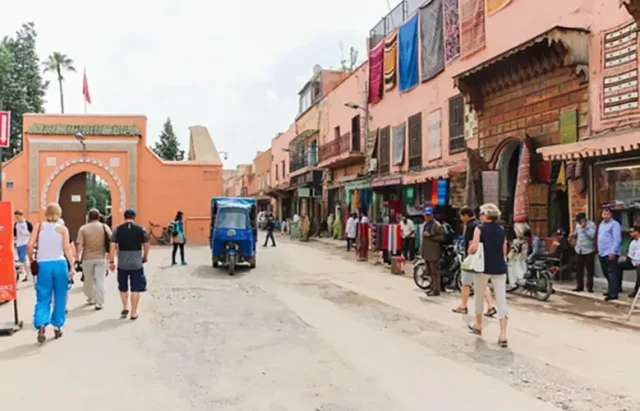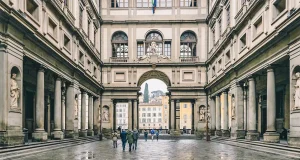
Marrakesh is renowned for its bustling energy, fragrant souks and markets, and a medina that twists and turns with life at every corner. While many travelers gravitate toward the main sights and attractions, the city also offers countless hidden highlights for those who prefer exploring on foot. For anyone seeking more peaceful, relaxed areas, it is entirely possible to experience the true spirit of Marrakesh—without the overwhelming press of tour groups. This is where thoughtful walking tours and self-guided walks become invaluable, revealing lesser-known corners and offering a deeper local culture immersion with ample space to breathe.
Why choose to explore Marrakesh on foot?
Exploring Marrakesh on foot opens the door to a far more intimate connection with the city. Traveling by foot provides a front-row seat to daily life, where each twist in the medina reveals either a new sensory delight or a rare moment of quiet away from the crowds. Meandering between the medina’s intricate alleyways, unexpected pockets of calm and unique perspectives appear—details easily missed by those who rush only along the main thoroughfares.
The walkability of Marrakesh is surprisingly good for the observant visitor. Many enchanting areas are accessible only on foot, making the journey especially rewarding for those eager to connect with the authentic heart of the city at their own pace.
Best times and tips for avoiding crowds
Crowds in Marrakesh can become overwhelming, especially at popular sites during midday or peak tourist seasons. However, a few clever strategies make a relaxed exploration possible. Early mornings and late afternoons are ideal for embarking on self-guided walks through quieter neighborhoods or lesser-known corners of the medina, offering a much calmer experience.
Midweek days are typically less crowded than weekends. Wandering just a bit off the main arteries into residential alleys or tranquil parks not only helps to avoid crowds, but also invites a sense of discovery. Comfortable shoes, a bottle of water, and a flexible sense of curiosity are all that is needed—there are always unexpected gems where most visitors do not look.
Top walking routes for peaceful Marrakesh exploration
Several routes around the city invite stress-free medina exploration and offer a true escape from the usual tourist bustle. Here are some favorite walking tours and self-guided walks that reveal both the storied past and tranquil present of Marrakesh.
The tanners’ quarter and hidden artisans
Heading northeast from Jemaa el-Fnaa, bypass the crowds moving toward the Koutoubia Mosque and slip into less-traveled lanes toward the tanners’ quarter. This area is liveliest early in the day, but outside peak hours it provides a fascinating glimpse into traditional craft.
This artisan route offers a deeply authentic local experience, where workers move hides through colorful vats under the Moroccan sun. While the scent is strong, the atmosphere is authentic, and the streets remain quiet compared to the main markets. It is worthwhile to pause, observe daily life unfolding, or chat with craftspersons in small workshops just off the main path.
A journey through Mouassine and hidden riads
The Mouassine district, tucked just north of Jemaa el-Fnaa, rarely attracts the crowds found in the central souks and markets. Begin on Rue Mouassine, taking time to admire the ornate facades and peer behind carved doors into serene riads or local galleries.
This peaceful neighborhood is home to tranquil tea gardens and creative spaces that blend modern art with centuries-old architecture. The winding streets of Mouassine often lead back into quiet stretches where colorful wooden doors and mosaic fountains create an oasis just steps from the medina’s vibrant core.
Lesser-known areas for a relaxed stroll
Certain neighborhoods maintain a peaceful atmosphere even while situated near Marrakesh’s iconic monuments. These areas provide the chance for a relaxed walk while staying close to rich history and culture.
Bab Doukkala’s leafy alleys: Beloved by locals, these shaded streets wind beneath citrus trees, offering glimpses into daily routines through open windows and lively bakeries.
Arsat Moulay Abdeslam Cyber Park: Birds sing and fountains bubble in this modern green space, which serves as a surprising pocket of serenity right outside the ancient city walls.
Sidi Ben Slimane mosque quarter: It is easy to get pleasantly lost among whitewashed houses and peaceful squares here, shielded from the city’s rush only a few blocks away.
Exploring these neighborhoods reveals a gentler side of the city, allowing one to absorb local rhythms without pressure. They are perfect for unhurried self-guided walks that offer genuine encounters and discoveries.
In these tranquil settings, it is entirely possible to stumble upon an unassuming art studio, hear a traditional storyteller, or taste bread fresh from a centuries-old communal oven—moments that rarely feature on itineraries focused solely on main sights and attractions.
How to balance main sights and relaxed corners?
Marrakesh dazzles with its iconic landmarks—the Saadian Tombs, Bahia Palace, and Koutoubia Mosque—yet there is real pleasure in combining major stops with peaceful, relaxed areas. Well-planned walking tours can weave together both hidden highlights and celebrated attractions, creating a balanced and rewarding itinerary.
For example, one might visit larger sites early when they first open, then drift into quieter districts for a leisurely mid-morning wander. Pausing for tea in a tucked-away café or losing track of time in an artist’s courtyard ensures both the excitement of seeing renowned sites and the tranquility of authentic local encounters.
Enjoying the souks and markets without feeling rushed
The souks and markets are essential to any Marrakesh experience, but navigating them without battling thick crowds makes all the difference. For those planning market visits, mid-morning or just before closing are ideal—most group tours pass through midday, leaving precious windows of calm on either side.
A helpful approach: Venture deeper into specialty souks—whether focused on spices, ironwork, or leather goods—instead of remaining near the busiest entrances. These inner lanes offer not only unique finds but also a slower, more enjoyable pace, perfect for meaningful exchanges or simply people-watching from a shaded bench.





